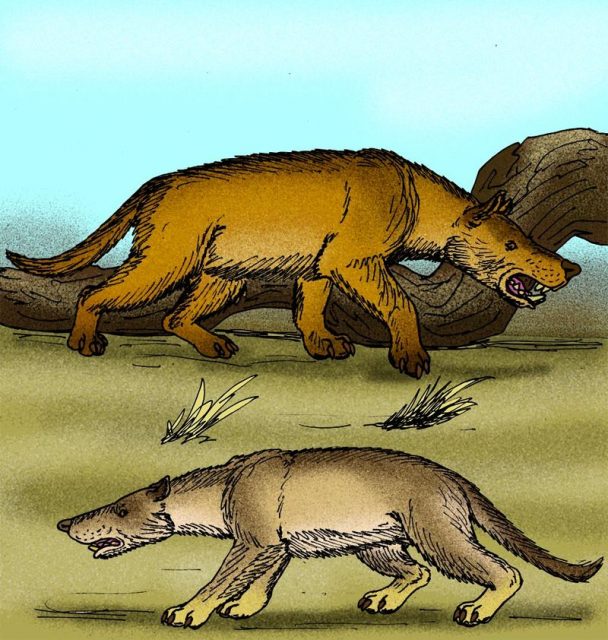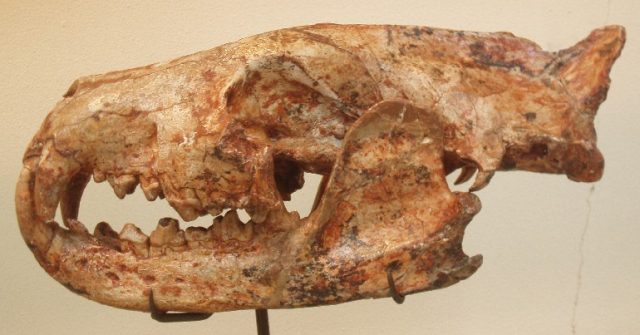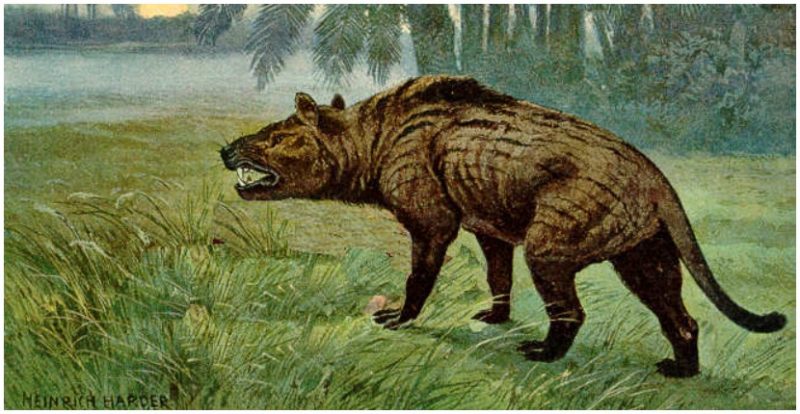On April 18, 2019, a scientific paper was published in the Journal of Vertebrate Paleontology, based on the analysis of a small collection of fossils discovered in Kenya, in the late 1970s. The remains of the mysterious creature, first classified as a hyena, spent years in a drawer of the Nairobi National Museum before catching the eye of American palaeontologists Matthew Borths and Nancy Stevens, in 2013. At the time, Borths was doing research for his doctorate degree dissertation.
According to Nature, Borths “recognized the jaw as that of a hyaenodont, but it was much larger and more complete than most examples he’d seen before, and in better condition.”
Researchers discover ancient giant ‘lion’ in Kenya.
The Simbakubwa kutokaafrika roamed the Kenyan savannah more than 20 million years ago and likely weighed up to 1,500 kgshttps://t.co/cfHf0wwJup pic.twitter.com/ez3hxPpwEH
— AFP news agency (@AFP) April 18, 2019
The paper reports that the skeleton in question belonged to a previously unknown species of large predator that walked the Earth some 22 million years ago, during the Early Miocene period. It is estimated that this animal, named Simbakubwa kutokaafrika, weighed around 3,300 lbs (1,500 kg), was eight feet long and four feet tall, making it the largest known land-based carnivorous mammal in history. While the polar bear holds this lofty title today, it too would be dwarfed by Simbakubwa.
Simbakubwa kutokaafrika roamed what is now Kenya around 22 million years ago and was probably larger than a polar bear. https://t.co/Pw7TyOWfXC
— Nature News & Comment (@NatureNews) April 18, 2019
Although Simbakubwa means “big lion” in Swahili, and the fossil was initially considered to be an ancestor of hyenas due to the similarities in its teeth, the creature is, in fact, unrelated to either big cats or hyenas. The fossils represent the long-extinct Hyaenodontidae (meaning “hyena teeth”), a family of hypercarnivores.
These apex predators, like modern carnivores, were equipped with extremely large and powerful front teeth, used to grab their prey. But Simbakubwa had three sets of blade-like “meat-slicing” back teeth, versus the single set of today’s predators, giving it a fearsomely huge jaw. It is estimated to have been much larger than any previously discovered hyaenadon fossil.

Simbakubwa is believed to have originated in Africa and spread to inhabit Eurasia some 20 million years ago, as continental drift brought the landmasses of the two continents closer to each other. This once dominant species evolved around the same time as the first apes in Africa. With the migration, however, Euroasian ecosystems were changed forever, as the arrival of a new super-predator shifted the balance in the animal kingdom.
Related Video: Hybrid Neanderthal Girl Discovered – 2 Different Species
https://youtu.be/5gXAGC8rIkU
“The discovery helps connect some of the evolutionary dots for this group of massive meat-eaters,” notes Catherine Zuckerman in National Geographic. “The fossil may also help scientists better understand why these apex predators ultimately did not survive.” According to Matthew Borths, the lead researcher and author of the study, the fossils, especially the well-preserved teeth, will help scientists piece together the bigger picture of species evolution and adaptation.

“Once you figure out the relationships between these animals, you can start to do things like estimate how big do you think the common ancestor of these creatures was, what was the world like when that theoretical common ancestor might have been alive?” he explained to National Geographic. “You can experiment with the data a little bit to figure out how these big evolutionary changes map onto other changes, like climate change and continental drift.”
Although the predator “wasn’t built to fail,” as Borth puts it, if we take a closer look at their equivalents of today ― such as lions, hyenas, tigers, and wolves ― we find many of them listed as endangered or vulnerable species.
Like an echo of current concerns, the research team concluded that Simbakubwa “was likely a casualty of rapid environmental change.” While it is also possible that overpopulation of the predator led an unsustainable decline in their prey species, what is certain is that something affected them greatly, and they failed to adapt to a different diet.
Read another story from us: Amazingly Well-Preserved Ice Age Horse Discovered in Siberian Permafrost
Top predators such as hyaenodonts have been shown to play a key role in stabilizing ecosystems, and the loss of these vital species can have a catastrophic ecological effect. In the end, these mighty beasts ― which were once at the top of the food chain ― were destined to become an appendix in the history of evolution.
